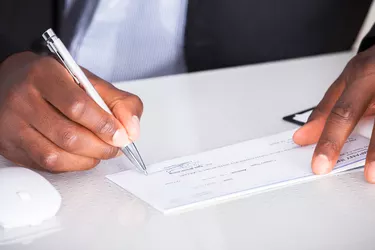Identity theft and forgery are serious issues in the banking industry. In an effort to prevent such criminal activities, your bank likely will return an illegible check, a check filled out incorrectly or one that appears altered. Although the best practice guideline for correcting a mistake on a check is to void it and start over with a new one, some banks will process altered checks if they're done the right way. To increase the chance for acceptance, review each new check order to make sure the printed information is correct. When you make corrections, always use a non-erasable, blue or black ink pen. Never attempt to erase a mistake and never use whiteout.

Video of the Day
Correctable vs. Non-correctable Mistakes
Contact your bank to see how your financial institution handles mistakes. Bank policies determine whether a mistake is correctable or whether the check is invalid. In every case, it is the bank's prerogative to accept or return the check.
Video of the Day
Mistakes on Printed Information
Outdated personal information, such as an old address and telephone number, does not affect check processing and therefore is correctable. If a cashier asks that you correct outdated personal data, strike through the incorrect information with a single line, write the correct information on the check and initial any changes you make.
Common Check Errors and Acceptable Corrections
Mismatched written and numerical amounts and incorrect dates are the most common correctable mistakes. When check amounts don't match, the written amount is the legal amount. State statutes always value words over numbers. To correct the numeric amount, enter the correct total above the incorrect numerals, circle the correct amount and initial the change. If the written amount is incorrect, you will not be able to correct it in a way the bank would accept. You'll need to void the check and start over.
Your bank may accept checks with incorrect dates based on pattern recognition, meaning they are checks you write regularly. For example, the bank may accept a check with incorrect date written to pay a utility bill, a car payment or your mortgage because you normally pay those bills every month.
To correct dates on checks you write less frequently, especially stale-dated checks that make it appear you wrote the check more than 180 days in the past, strike through the entire date with a single line, write the correct date above it and initial the change. If the bank refuses to honor a stale-dated check even after you correct the date, you'll need to void it and write a new one.